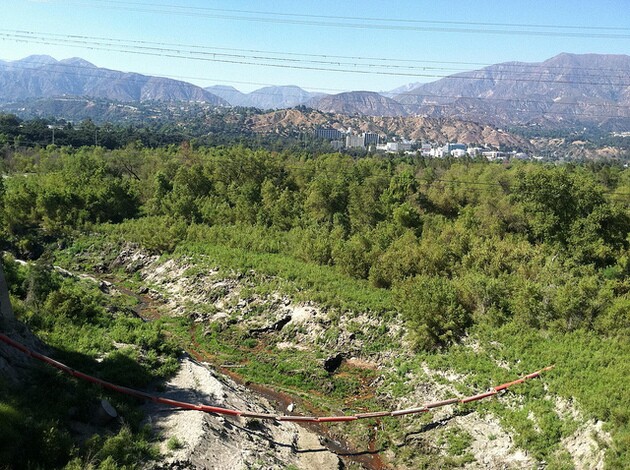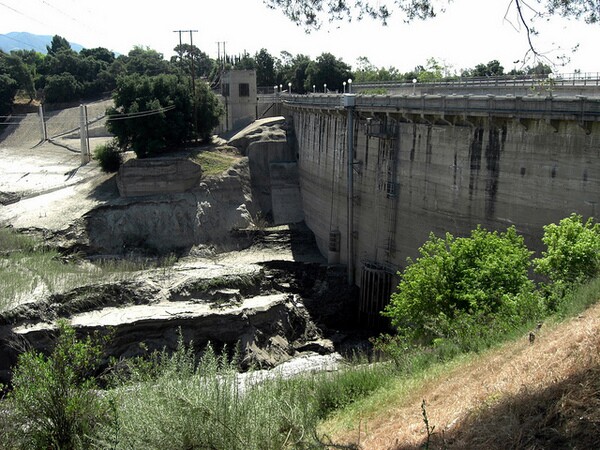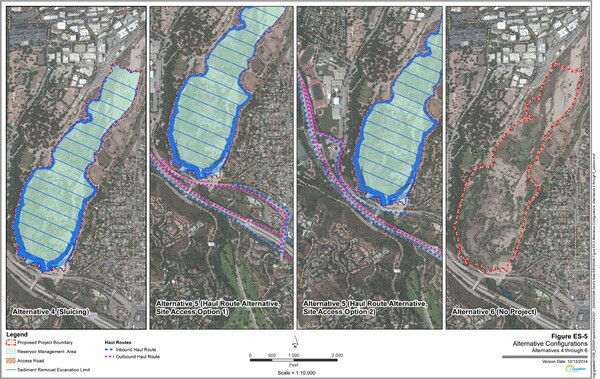Conservationists Take to Crowdfunding to Fight Hahamongna Watershed Plan

These days it's never been easier to put your money where you mouth is, by supporting projects you feel strongly about via crowdfunding platforms. Supporters are usually asked to contribute money to realize quirky projects that might not have garnered as much attention through regular channels (such as a cooler-blender-boom box combo, the making of a cult movie based off a series, or a card game of exploding kittens), but the conservationists at Arroyo Seco Foundation (ASF) and Pasadena Audubon (Audubon) are hoping a similar strategy can help them involve an even broader base of supporters for an environmental cause right in their backyards.
ASF and the Audubon have embarked on a grassroots campaign to fight the Los Angeles County Flood Control District's (LACFD) $100-million plan to scrape the growing sediment off the basin at Hahamongna Watershed Park in Pasadena as part of its Devil's Gate Reservoir Sediment Removal and Management Project.
The two groups have filed a suit on December 11, challenging the Board of Supervisors' recent approval of the Devil's Gate Reservoir Sediment Removal Project. The suit alleges that in approving the plan last November, the county violated the California Environmental Quality Act (CEQA) and the city of Pasadena's General Plan and Land Use ordinances.
Now the conservationists are asking for $25,000 to successfully press this lawsuit. It's already achieved more than $14,000 toward that goal. At the end of January, La Cañada Flintridge parents Shannon and Tim Griffin have offered an additional $5,000 toward the campaign, if it is able to reach $20,000 by February 5 deadline.
"We know there is a lot of widespread public support for a careful, ongoing program of stream restoration and sediment management in Hahamongna and the Arroyo Seco," said Tim Brick, managing director of the Arroyo Seco Foundation, in a statement. "But the County has not listened to public concerns about the impacts of their program on Hahamongna and on our neighborhoods. Now we're demonstrating the depth of that concern with this grassroots fundraising campaign."
The Arroyo Seco is a major tributary of the Los Angeles River and links the San Gabriel Mountains and downtown Los Angeles. Before the dam was built, the Arroyo Seco actually provided passage to great anadramous trout as they moved from the mountains to the ocean and back again.

The Devil's Gate Dam is the oldest dam constructed by the LAFCD. It provides flood protection for the cities of Pasadena, South Pasadena, and Los Angeles. It is also able to store as much as 7.42 million cubic yards of water in its reservoir, though over the years this has been diminished significantly due to sediment deposits from water flowing downstream through the channel. Sediment accumulation has increased dramatically over the years because of the 2009 Station Fire, the largest fire recorded in the history of the Angeles National Forest. About 68 percent of the tributary to Devil's Gate Reservoir was burned. Sediments continue to pile up at the reservoir during each subsequent storm. The sediment removal project is designed to ensure the Dam's reservoir capacity at 4 million cubic yards below an elevation of 1,040.50 feet.
Last November 12, the County of Los Angeles Board of Supervisors certified the Final Environmental Impact Report (FEIR) for the Devil's Gate Reservoir Sediment Removal and Management Project. The Board also directed the Los Angeles County Flood Control District to carry out the Project based on the Environmentally Superior Alternative from the FEIR. The plan would remove 2.425 million cubic yards of sediment at Devil's Gate Dam in Pasadena over a 70 to 76-acre footprint within five years, including the western area of the Devil's Gate Dam, which many recreationists and animals frequently use.
Conservationists say that LAFCD's plan is only a temporary solution that has 425 double dump trucks a day running through the project area, giving off noxious fumes, noise, and adding to traffic. The effort would also destroy precious streamside habitat and a riverside alluvial fan sage scrub -- an increasingly rare habitat in Southern California.
According to ASF and Audubon, this would only be the beginning. "This only a small part of the County's sediment problem because they have built a system of 14 dams and 162 sediment capture facilities that now requires costly permanent maintenance, that will cost taxpayers billions in the next two decades," says Brick. "The flood and storm drain system also wastes enormous amounts of precious rainfall and pollutes the Pacific Ocean."
LAFCD plans do allow for 20 acres of vegetation to grow or be replanted post-mitigation. Its plans also include having a qualified biologist present during ground-disturbing activities. These measures, they say, lessens the environmental impact of the plan, but conservationists say this isn't enough.

ASF and Audubon support an alternative plan adopted by the Pasadena City Council last May. Based on their alternative plan, only 1.1 million cubic yards of sediment would be removed over the next five years, using 120 trucks a day maximum over a 40-acre project footprint. Additionally, these would be trucks that meet the 2010 Environmental Protection Agency standards. This alternative would provide flood protection and preserve the Hahamongna habitat with far less impact that what's being planned.
More than that, the conservationist groups are hoping to change the way the city deals with its water -- not just as a flood risk, but a precious resource. "Sediment might seem like an obscure issue, but is central to river restoration in the Arroyo Seco and the Los Angeles River," says Brick. "Outdated flood structures have destroyed our river. Dams, like Devil's Gate Dam, inevitably trap sediment and choke the life out of our rivers. Trucking the sediment away to distant landfills isn't a viable long-term solution. Southern California needs to take a new look at flood management."
Brick continues, "a more sustainable program that integrates flood protection with storm water capture, water quality improvements, habitat restoration and recreational opportunities can restore the Arroyo Seco and the Los Angeles River as the natural treasures that they are."
The question now is whether a broader range of people feels the same as the conservationists. Laura Garrett, conservation chair of the Pasadena Audubon Society, said in a statement, "The fate of Hahamongna and our neighborhoods depends on the generosity and support of the public."
If the campaign goes well, we might see more non-profits taking to the "digital streets" in an effort to add to their supporter base and garner much needed financial support for their projects.
More information about the Devil's Gate project is available here. Support the IndieGogo campaign here.

